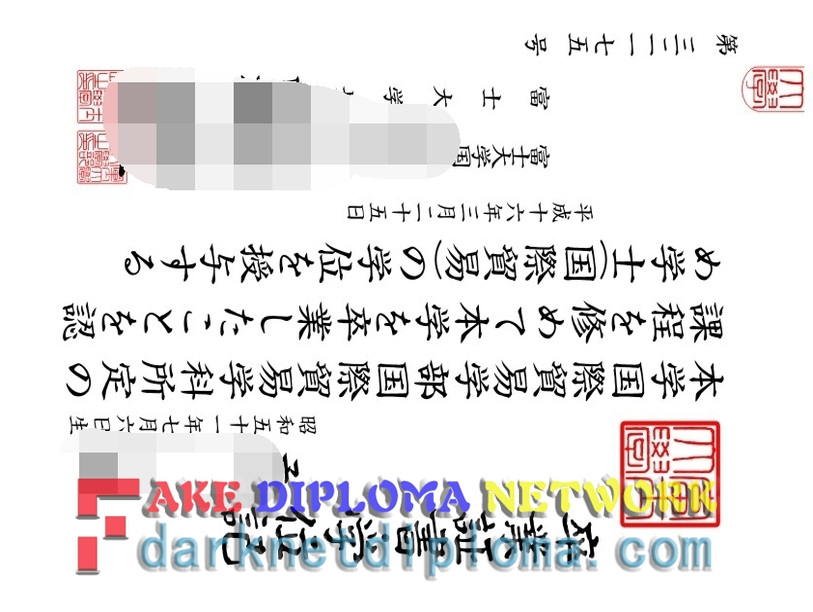Introduction
Are you a proud graduate of Tokyo Fuji University and looking for ways to authenticate your diploma? Or perhaps, curious if that piece of paper hanging on the wall is genuine? With an increasing number of counterfeit degrees flooding the market, it's essential to know what distinguishes the real from the fake. In this blog post, we will explore key features that help you identify a Fake Tokyo Fuji University Diploma and ensure its authenticity.
Common Features Found in Genuine Diplomas
1. Official Seal
A genuine diploma typically bears an official seal of the university. This seal is often embossed or printed with raised ink, making it difficult to replicate.
2. Signature
Look for a signature from the president or registrar of Tokyo Fuji University. Each signature should be unique and may vary in style depending on who signed the document.
3. Unique Identifier
Every diploma issued by Tokyo Fuji University is assigned a unique identifier such as a registration number or student ID. Check if this identifier matches the records available online or through the university’s administrative office.
Signs of a Fake Diploma
1. Poor Quality Paper
Counterfeit diplomas often use inferior paper that feels thin and lacks texture compared to the genuine article. The surface may also be smoother, lacking the subtle grain found in high-quality paper.
2. Faded Colors

Colors on a fake diploma might appear slightly off or faded. For instance, black ink could look bluish or grayish, while other colors like blue or red might seem duller than expected.
3. Lack of Embossing or Raised Print
If the seals and signatures are not embossed or have no raised print, this is a strong indicator that you're holding a counterfeit diploma.
How to Authenticate Your Diploma
1. Visit the University’s Website
Many universities provide an online portal where graduates can verify their degree by entering unique identifiers such as student ID numbers or registration codes.
2. Contact the Registrar's Office
The registrar’s office at Tokyo Fuji University is a reliable source for verifying your diploma. They can confirm details like the date of graduation, course studied, and any other relevant information.
3. Compare with Original Samples
If you have access to an original sample of a Tokyo Fuji University diploma, compare the texture, color, and layout of your document against it. Differences in these aspects could point towards a counterfeit.
Conclusion
Navigating the world of Fake Tokyo Fuji University Diplomas can be daunting, but by paying attention to key features such as the official seal, unique identifier, and quality paper, you can confidently authenticate your degree. Don't hesitate to reach out to university officials for further verification—after all, it’s a piece of history that represents years of hard work!
Stay informed, stay verified!